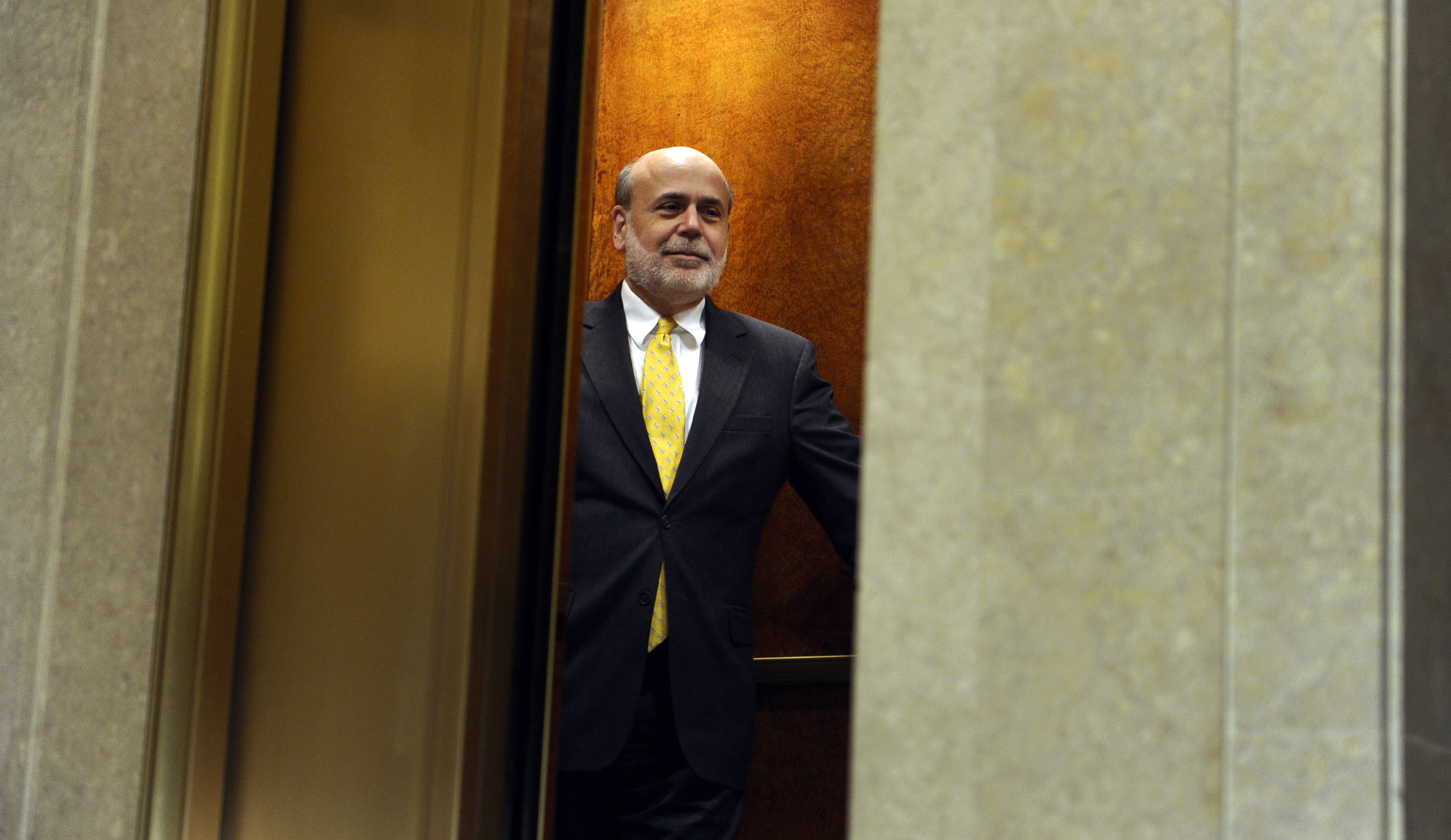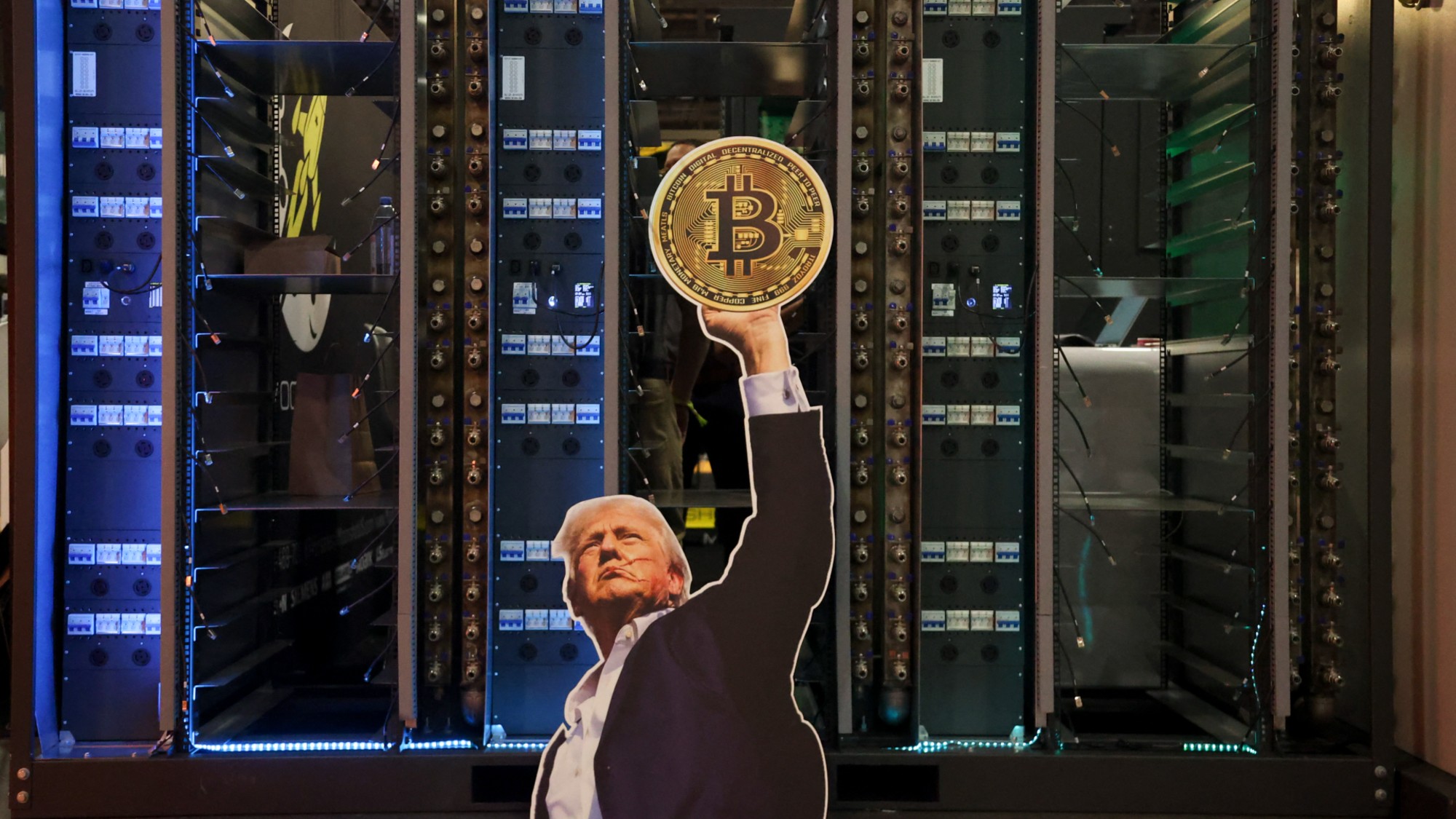Why Ben Bernanke's new PIMCO gig is so troubling
The social milieu surrounding the Fed is almost entirely composed of the wealthiest Americans


Ben Bernanke, former chairman of the Federal Reserve, has officially entered the revolving door.
Two weeks ago he was hired as a senior advisor at Citadel, a $25 billion hedge fund. Then on Wednesday he picked up another consulting gig with the $1.6 trillion global behemoth Pacific Investment Management Company (PIMCO). Bernanke told The New York Times he's sensitive to worries about conflicts of interest, and took offers only from firms that aren't regulated by the Fed. Which is admirable. But what's troubling about Bernanke's new gigs isn't the possibility of outright corruption or quid pro quos.
Alan Greenspan was also picked up by PIMCO, as well as by Deustche Bank, after his run as Fed chairman. And Jeremy Stein, a former Fed governor, just joined the $20 billion BlueMountain Capital Management. These jobs are indicative of the Fed's social milieu: Who do the institution's officials interact with on a daily basis? Whose jobs, hopes, struggles, and problems do they hear about and contend with? Whose jobs, hopes, and struggles do they not not hear about? These questions shape the cultural and ideological weather around them, determining the priorities, values, and assumptions that will influence them as human beings.
The Week
Escape your echo chamber. Get the facts behind the news, plus analysis from multiple perspectives.

Sign up for The Week's Free Newsletters
From our morning news briefing to a weekly Good News Newsletter, get the best of The Week delivered directly to your inbox.
From our morning news briefing to a weekly Good News Newsletter, get the best of The Week delivered directly to your inbox.
Think of the studies by Larry Bartels and Martin Gilens, which show that when the top third or top 10 percent of Americans disagree with the rest of the country on a particular policy question, lawmakers act as if the rest of the country doesn't exist.
So how does this matter for the Federal Reserve and monetary policy specifically? Well, as it stands, the Fed's charter hands it a dual mandate: keep inflation down and keep employment up. It has various tools to do this, but the key thing to understand is there's an inherent tension. Inflation is primarily the result of rising wages putting upward pressure on prices. So you can't really get rising inflation without robust growth in jobs and wages; and so the more you tamp down inflation, the more you tamp down employment and incomes for everyday Americans. Conversely, the better those jobs and incomes are doing, the more you risk inflation.
On top of that, the mandate is basically subjective. It has no hard metrics or numbers, so the Fed is left to figure its way through that balancing act on its own.
Now, look at the people who inhabit the worlds of PIMCO and Citadel. They're investors, which is to say, people who have excess cash lying around, park it in various financial instruments and securities, and then make money off the interest. "Rentiers" is the term of art. They are typically creditors, and somewhere out there are debtors who owe them that interest and principal back. These are not even middle class Americans, much less lower or working class: 60 percent of financial securities are held by 1 percent of Americans, and 98 percent are held by the top 10 percent. Everyone below that threshold is much more likely to be a net debtor.
A free daily email with the biggest news stories of the day – and the best features from TheWeek.com
The lower inflation is, the better rentiers do. Their investments are made in fixed dollar amounts, so higher inflation diminishes the value of their investment and makes it easier for debtors to pay them off. Furthermore, the interest rates in most financial instruments factor in the level of inflation, so they'll rise as inflation does. That will drive down the price of the existing bonds and loans the rentiers already hold.
What we're really talking about here are the interests of the entire financial industry. The very design of the Fed ensures that entanglement: of the 12 voting officials who decide monetary policy at the Fed, seven are appointed by the president and confirmed by the Senate. But the other five are drawn from the Fed's district branches, with no democratic vetting.
Wealthy business owners and corporate elites are also worth mentioning here. First, they're usually rentiers themselves. But they also oversee large populations of workers. And if jobs and incomes are growing at a healthy pace, that gives workers more bargaining power. That means labor costs for these business owners will rise, and the cut of revenue they can keep as profit will diminish. It also means owners have less control over the course of their business, as unions are empowered and employees can demand better working conditions.
All these people sit at the peak of the economy, or at least closer to it in comparison to most Americans. If the Fed chooses to prioritize low inflation — and thus puts up with chronic unemployment, and sacrifices a lot of its leverage to fight off recessions — they will be among the last people to be touched by the economic pain, and may even gain from the loss of bargaining power workers will suffer.
But most middle class Americans, and certainly most lower and working class Americans, have far more to gain if the Fed puts up with modestly higher inflation rates — say 4 percent annually — in order to keep employment and wage growth as robust as possible. Seniors living on Social Security, who are often held up as the victims of devaluation of the dollar, will not lose purchasing power, because the program's benefit formula accounts for inflation. Retirement accounts in stocks will also avoid any damage, as they're different from other financial instruments.
It's true that inflation allows employers to "cut" employee wages after a fashion — instead of raising wages in real terms, they can just allow inflation to raise them in nominal terms, without actually increasing workers' purchasing power. But since inflation is unlikely to even set in without pressure from rising wages and increased employment, this seems a modest trade-off.
As Dean Baker put it:
We have to recognize that regardless of its legal mandate, as it stands now, the Fed is answerable to people who care much about inflation and little, if anything, about unemployment. Even modest increases in the rate of inflation are viewed as a high crime, despite the fact that there is little evidence that moderately higher inflation (e.g., 3 to 4 percent as compared to 2 percent) causes any serious harm to the economy. By contrast, sharp divergences from full employment, which cause enormous suffering and massive losses of potential output, are not viewed as a serious failure by the interest groups to whom the Fed is accountable. [The End of Loser Liberalism]
The point here is most definitely not to damn Bernanke personally. By all accounts, he did a much better job shoving the Federal Reserve in a genuinely populist direction than most people who have led the institution. It's just that, by any reasonable standard, even his efforts were grossly inadequate. The reasons for that go well beyond Bernanke, and are baked into a very real class divide in American society over who needs low inflation the most versus who needs full employment the most.
Generally speaking, only one side of that divide gets a voice in both the explicit design of the Fed, and its social make-up as a human institution.
Jeff Spross was the economics and business correspondent at TheWeek.com. He was previously a reporter at ThinkProgress.
-
 Cryptocurrency and the future of politics
Cryptocurrency and the future of politicsIn The Spotlight From electoral campaigns to government investments, crypto is everywhere and looks like it’s here to stay
-
 Ssh! UK libraries worth travelling for
Ssh! UK libraries worth travelling forThe Week Recommends From architectural delights to a ‘literary oasis’, these are some of the best libraries around the country
-
 A fentanyl vaccine may be on the horizon
A fentanyl vaccine may be on the horizonUnder the radar Taking a serious jab at the opioid epidemic
